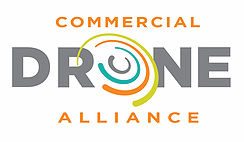
“The UAS revolution is an economic boom in the making. A recent PricewaterhouseCoopers report estimated the global market value of UAS-powered solutions at over $127 billion. The FAA has projected there will be 11 million commercial drones sold here in the U.S. by 2020, just 2 years from now,” says the Alliance. “But as big and exciting as these numbers are, they are built on the assumption that our policy and regulatory frameworks keep pace. As is so often the case, technology has moved more quickly than policymaking—and UAS integration efforts have lagged behind the pace of innovation in the United States.”
The Commercial Drone Alliance, advocating for the adoption of commercial drone use in the U.S. and overseas, says that regulations have created a challenging environment for US-based companies.
“While there has been progress over the last two years, the United States is behind much of the international community and many companies, small and large, have been forced to move their UAS operations and testing abroad,” the Alliance says.
“While there has been some progress made over the last few years to integrate commercial drones into the National Airspace System, much work remains to be done,” said Lisa Ellman, Co-executive Director, Commercial Drone Alliance. “Congress can play a critical role moving transportation innovation forward in a way that is safe and secure. The Commercial Drone Alliance is pleased to collaborate with lawmakers to promote specific high-impact initiatives that will remove barriers to UAS integration.”
Added Gretchen West, Co-executive Director, Commercial Drone Alliance, “Top of our list includes enabling common sense requirements for hobbyist drone flight, requiring and implementing a comprehensive remote identification framework in a timely way, authorizing expanded commercial drone operations, streamlining and improving the waiver process, and implementing a “Trusted Operator” program to streamline authorized commercial operations. We are also focused on supporting the development of an industry-driven UTM system, additional security measures where necessary, and infrastructure package provisions designed to propel the commercial drone industry forward.”
From the Legislative Priorities:
To promote commercial drone integration in a way that is safe and secure, Congress should support the following initiatives in the FAA Reauthorization bill or other relevant legislation:
o Eliminate (or at the very least amend) the Section 336 hobbyist loophole, which endangers the safety and security of the airspace and slows innovation.
o Require the FAA to require remote identification for all drones over 250 grams, including hobbyist drones.
o Direct the FAA to swiftly implement a rule authorizing low-risk operations over people.
o Direct the FAA to allow safe operations beyond visual line of sight in a timely way.
o Direct the FAA to streamline and improve the operation waiver process.
o Direct the FAA to implement a “Trusted Operator” program that establishes streamlined permitting and operational procedures for authorized commercial UAS operations.
o State the sense of Congress supporting the industry-driven Unmanned Aircraft Traffic Management (UTM) System and its timely implementation.
o Ensure that UAS programs, and relevant agency offices, are adequately funded and staffed to accomplish these priorities and support existing programs in a timely way.
Miriam McNabb is the Editor-in-Chief of DRONELIFE and CEO of JobForDrones, a professional drone services marketplace, and a fascinated observer of the emerging drone industry and the regulatory environment for drones. Miriam has penned over 3,000 articles focused on the commercial drone space and is an international speaker and recognized figure in the industry. Miriam has a degree from the University of Chicago and over 20 years of experience in high tech sales and marketing for new technologies.
For drone industry consulting or writing, Email Miriam.
TWITTER:@spaldingbarker
Subscribe to DroneLife here.